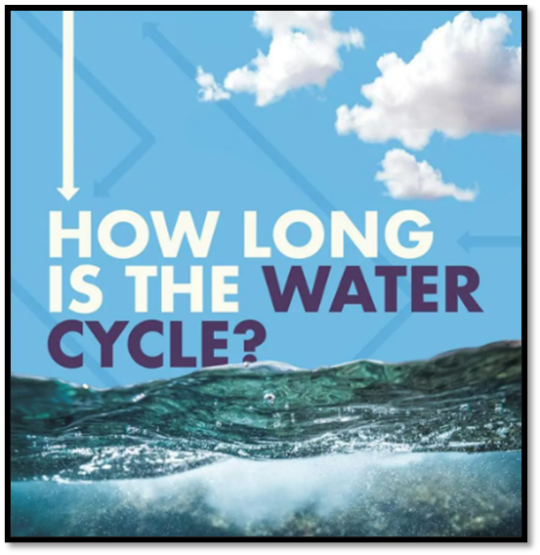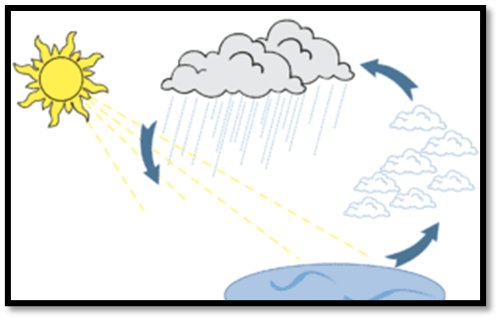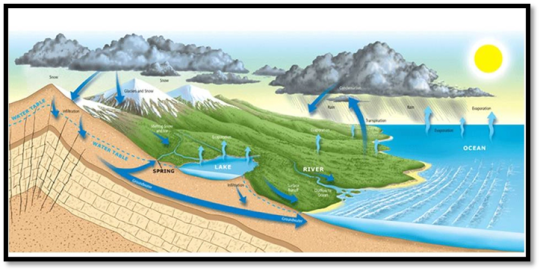What is water conservation?Water conservation refers to the practice of using water efficiently and reducing water waste. It involves adopting behaviors and technologies that help to preserve water resources and minimize water usage.How can we save water?Fix leaks: Repair any leaks in faucets, toilets, and pipes to prevent water wastage.Install water-efficient fixtures: Use low-flow showerheads, faucets, and toilets that consume less water.Take shorter showers: Limit your shower time to conserve water.Use efficient appliances: Choose energy-efficient dishwashers and washing machines that use less water.Water plants wisely: Water your plants during cooler parts of the day to minimize evaporation, and use drip irrigation or a soaker hose to target the roots directly.Why is it important to save water?Saving water is crucial for several reasons:Environmental preservation: Conserving water helps to protect our rivers, bays, estuaries, and other natural habitats. It ensures that ecosystems have enough water to support plant and animal life.Sustainable water supply: By saving water, we can help ensure a sustainable water supply for future generations. As population growth and climate change put pressure on water resources, it becomes increasingly important to use water wisely.Energy savings: Water conservation also leads to energy savings. Treating and delivering water requires energy, so reducing water usage can help reduce energy consumption and associated greenhouse gas emissions.
Don't wanna be here? Send us removal request.
Text
Blog Post #3
Title: The California Water Crisis: A Case for Water Conservation
Introduction:
California is one of the driest states in the United States, and it is facing a severe water crisis. The state has experienced a number of droughts in recent years, and climate change is making droughts more frequent and severe.
Historical Context:
California has a long history of water management. In the late 19th century, the state built a number of dams and canals to store and distribute water. However, the state's water system is now under strain due to population growth and climate change.

Key Figures and Actions:
One key figure in the California water crisis is Jerry Brown. Brown was the Governor of California from 2011 to 2019. During his tenure, he signed a number of laws to promote water conservation, including a law that required all new homes to be equipped with water-efficient appliances.

Another key figure in the California water crisis is Jay Famiglietti. Famiglietti is a hydrologist and professor at the University of California, Irvine. He has been warning about the California water crisis for many years. He has also been working on developing new technologies to conserve water.

Outcomes and Impact:
The California water crisis has had a significant impact on the state's economy and environment. Farmers have been forced to reduce their water use, which has led to crop failures and job losses. The water crisis has also had a negative impact on the state's fish and wildlife populations.
Relevance to Contemporary Issues:
The California water crisis is a reminder of the importance of water conservation in all regions, even those that are not traditionally considered to be dry. Climate change is making droughts more frequent and severe, so it is more important than ever to conserve water.

Conclusion:
The California water crisis is a complex issue with no easy solutions. However, it is clear that water conservation is essential to the future of the state. We can all do our part to conserve water by making simple changes in our daily lives.
Additionally, the California water crisis has highlighted the importance of water equity. Historically, marginalized communities have borne the brunt of water shortages and water quality issues. It is important to ensure that all Californians have access to clean and affordable water, regardless of their race, income, or ZIP code.
Lessons from the California water crisis can be applied to other regions around the world that are facing water challenges. By investing in water conservation and water equity, we can build more resilient communities to the impacts of climate change.

0 notes
Text
Blog Post #2
Title: The Chipko Movement: A Grassroots Movement for Water Conservation
Introduction:
The Chipko Movement was a non-violent environmental movement that took place in India in the 1970s and 1980s. The movement was started by local villagers who were protesting against the government's decision to allow timber companies to cut down forests in the Himalayas. The villagers believed that the forests were essential for water conservation and flood control.
Historical Context:
In the 1970s and 1980s, India was facing a number of environmental challenges, including deforestation, soil erosion, and water shortages. The government's decision to allow timber companies to cut down forests in the Himalayas exacerbated these challenges.

Key Figures and Actions:
One key figure in the Chipko Movement was Gaura Devi. Devi was a villager who led a protest against the cutting down of ash trees in her village. She hugged a tree to prevent the timber workers from cutting it down. Devi's actions inspired other villagers to join the movement.

Another key figure in the Chipko Movement was Sunderlal Bahuguna. Bahuguna was a Gandhian environmentalist who helped to organize the movement. He traveled throughout India to raise awareness about the importance of forests and water conservation.

Outcomes and Impact:
The Chipko Movement was successful in saving millions of trees. It also led to a number of changes in government policy, including a ban on logging in the Himalayas. The Chipko Movement also inspired other environmental movements around the world.
Relevance to Contemporary Issues:
The Chipko Movement is a reminder of the importance of grassroots activism and the power of people to protect the environment

0 notes
Text
Blog Post #1
Title: The Dust Bowl: A Historical Perspective on Water Conservation
Introduction:
The Dust Bowl was a period of severe dust storms that greatly damaged the ecology and agriculture of the American and Canadian prairies during the 1930s. The Dust Bowl was caused by a combination of factors, including drought, poor farming practices, and wind erosion. The Dust Bowl had a devastating impact on the people and environment of the region, and it served as a wake-up call about the importance of water conservation.
Historical Context:
The Dust Bowl occurred during the Great Depression, a time when many people were struggling to survive. The drought that began in the 1930s was the worst in American history. At the same time, many farmers were using unsustainable farming practices, such as plowing up native grasslands and failing to rotate crops. These practices made the soil more vulnerable to erosion.

Key Figures and Actions:
One key figure in the history of water conservation during the Dust Bowl was Hugh Bennett. Bennett was a soil scientist who worked for the US Department of Agriculture. He warned farmers about the dangers of poor farming practices and advocated for soil conservation measures. Bennett also helped to establish the Soil Conservation Service, which is now known as the Natural Resources Conservation Service.

Another key figure in the history of water conservation during the Dust Bowl was Franklin D. Roosevelt. Roosevelt was the President of the United States during the Great Depression. He launched a number of programs to help farmers, including the Agricultural Adjustment Act, which paid farmers to plant soil-conserving crops. Roosevelt also established the Civilian Conservation Corps, which employed young men to plant trees and build soil conservation structures.

Outcomes and Impact:
The Dust Bowl had a devastating impact on the people and environment of the region. Millions of people were displaced, and the economy of the region was ruined. The Dust Bowl also had a significant impact on the nation's food supply.
The Dust Bowl also led to a number of important changes in water conservation practices and policies. Farmers began to adopt more sustainable farming practices, such as crop rotation and cover cropping. The government also began to invest in soil conservation measures, such as terracing and contour farming.
Relevance to Contemporary Issues:
The Dust Bowl is a reminder of the importance of water conservation. Climate change is making droughts more frequent and severe, so it is more important than ever to conserve water. We can all do our part to conserve water by making simple changes in our daily lives, such as taking shorter showers, fixing leaky faucets, and watering our lawns less often.

Conclusion:
The Dust Bowl was a devastating event in American history, but it also served as a wake-up call about the importance of water conservation. The lessons of the Dust Bowl are still relevant today. As we face the challenges of climate change, we must all work together to conserve water and protect our planet.

0 notes
Text
Post 3: "The Water Cycle" by Emily Dickinson
Introduction
A poem about the water cycle, this work describes the journey of a water droplet as it evaporates from the ocean, condenses into clouds, falls as rain or snow, and eventually returns to the ocean. Dickinson uses vivid imagery and personification to bring the water cycle to life.
Literary Analysis
"The Water Cycle" can be interpreted as a meditation on the importance of water and the need to conserve it. The poem highlights the interconnectedness of all living things and our reliance on water for survival.
Dickinson's use of personification is particularly noteworthy in this poem. She gives the water droplet a voice and allows it to share its own perspective on its journey. This helps the reader to connect with the water cycle on a more personal level.

Author's Message
Dickinson's message in "The Water Cycle" is clear: water is precious and we must all do our part to conserve it. The poem is a reminder of the interconnectedness of all living things and our reliance on water for survival.
Practical Advice
Here are some practical tips for water conservation based on the themes and lessons of "The Water Cycle":
1. Collect Rainwater: The poem highlights the transformative power of rain. One practical way to conserve water is by collecting rainwater. Install rain barrels or storage tanks to collect rainwater from your roof, which can then be used for gardening, washing vehicles, or other non-potable purposes.
2. Be Mindful of Water Usage: The poem emphasizes the importance of balance and flow. To conserve water, be mindful of your water usage. Turn off the tap while brushing your teeth or shaving, and take shorter showers. Fix any leaks in faucets or toilets promptly to avoid unnecessary water waste.
3. Opt for Water-Efficient Appliances and Fixtures: Just as water finds balance, we can strive to find balance by using water-efficient appliances and fixtures. Install low-flow showerheads and faucets, as well as dual-flush toilets. These measures can significantly reduce water consumption without compromising functionality.

4. Practice Water-Wise Landscaping: The poem suggests that water shapes the land. Implement water-wise landscaping techniques by choosing native plants that are adapted to your local climate and require less water. Use mulch to retain moisture in the soil, and water your plants during cooler times of the day to minimize evaporation.
5. Reuse and Recycle Water: The poem highlights the interconnectedness of water in the cycle of life. Consider reusing and recycling water whenever possible. For example, collect water used for rinsing fruits and vegetables and use it to water plants. Use greywater systems to recycle water from showers, sinks, and washing machines for irrigation purposes.
6. Educate and Advocate: The poem underscores the importance of recognizing interconnectedness. Spread awareness about the significance of water conservation among family, friends, and your community. Support local initiatives and organizations that promote water conservation. Advocate for responsible water management practices in your area.
Conclusion
"The Water Cycle" is a beautiful and thought-provoking poem that reminds us of the importance of water and the need to conserve it. Dickinson's vivid imagery and personification help the reader to connect with the water cycle on a more personal level.

0 notes
Text
Post 2: Literary Analysis of "Water: Essential to Life" by Sandra Markle
Introduction
"Water: Essential to Life" is a non-fiction book by Sandra Markle that was first published in 1999. The book provides a comprehensive overview of water, its importance to life, and the challenges we face in protecting this precious resource.
Markle's book is an essential resource for anyone who wants to learn more about water and how to conserve it. It is written in a clear and concise style, and it is packed with interesting information.

Literary Analysis
"Water: Essential to Life" covers a wide range of topics related to water conservation, including:
The importance of water for life
The global water crisis
The challenges of water management
Water conservation strategies
The role of individuals in water conservation
Markle's book is a valuable resource for anyone who wants to learn more about water conservation. It is also a call to action, urging us to take steps to protect this essential resource.
Author's Message
Markle's message in "Water: Essential to Life" is clear: we must all do our part to conserve water. She shows us how water is essential for life and how the global water crisis is threatening our way of life. She also provides us with practical advice on how to conserve water in our daily lives.

Practical Advice
Here are some practical tips for water conservation based on the lessons of "Water: Essential to Life":
Reduce your water consumption by taking shorter showers, fixing leaky faucets, and watering your lawn less often.
Collect rainwater to use for watering plants or washing your car.
Support businesses and organizations that are committed to water conservation.
Get involved in water conservation efforts in your community.
Conclusion
"Water: Essential to Life" is a valuable resource for anyone who wants to learn more about water conservation. It is a well-written and informative book that provides us with the knowledge and tools we need to protect this precious resource.

0 notes
Text
Post 1: Literary Analysis of "The Grapes of Wrath" by John Steinbeck
"The Grapes of Wrath" is a Pulitzer Prize-winning novel by John Steinbeck that was published in 1939. The novel tells the story of the Joad family, who are forced to leave their farm in Oklahoma during the Dust Bowl and travel to California in search of a better life.
"The Grapes of Wrath" is a powerful and moving depiction of the human cost of the Dust Bowl and the Great Depression. It is also a story about hope and resilience.

Literary Analysis
Water conservation is a central theme in "The Grapes of Wrath." The Joad family's journey to California is driven by their need for water. Their farm in Oklahoma has been destroyed by the Dust Bowl, and they have no choice but to leave in search of a better life.
The symbolism of water is also important in the novel. Water represents life, hope, and possibility. When the Joad family reaches California, they are disappointed to find that the land is not as fertile as they had imagined. The water is scarce, and the people are struggling to survive.
Author's Message
Steinbeck's message in "The Grapes of Wrath" is clear: water is essential to life, and we must protect it. He also shows us how the lack of water can lead to poverty, displacement, and suffering.

Practical Advice
Here are some practical tips for water conservation based on the themes and lessons of "The Grapes of Wrath":
Be mindful of your water use in everyday activities, such as showering, brushing your teeth, and washing dishes.
Fix any leaky faucets or pipes in your home.
Water your lawn less often and more deeply.
Collect rainwater to use for watering plants or washing your car.
Support businesses and organizations that are committed to water conservation.
Conclusion
"The Grapes of Wrath" is a powerful and timely novel that reminds us of the importance of water conservation. We must all do our part to protect this precious resource.

0 notes
Text
The water is the life of the planet
Mission:
To educate and inspire people to conserve water and protect our precious resources.
Vision:
A world where everyone has access to clean water and where water conservation is a way of life.
Values:
Stewardship: We believe that we have a responsibility to care for our planet and its resources.
Sustainability: We are committed to promoting sustainable water practices that will benefit future generations.
Education: We believe that education is the key to water conservation. We strive to provide our readers with the information and tools they need to make informed choices about their water use.
Community: We believe that we can achieve more together. We are committed to building a community of people who are passionate about water conservation.
I believe that everyone has a role to play in conserving water. My blog is a resource for people of all ages and backgrounds to learn about water conservation and how to make a difference.

0 notes
Text
How did I save water yesterday?
I saved the water yesterday by taking a quick shower and turning off the faucet when it wasn't necessary. I also reused the water to wash clothes to water the garden plants. And lastly, I turned off the faucet when I went to wash my mouth and opened it only to rinse it. This is how I reused a lot of water yesterday and I encourage others to do the same.
1 note
·
View note